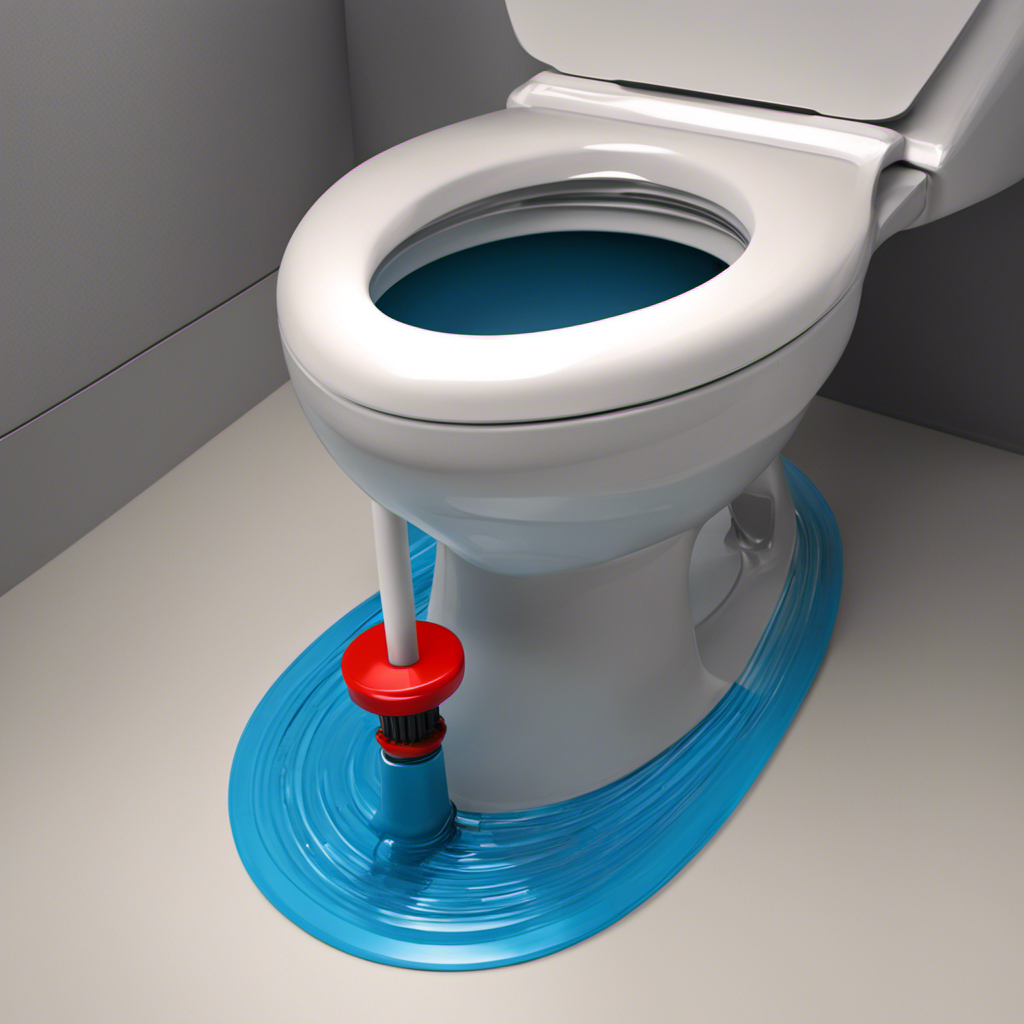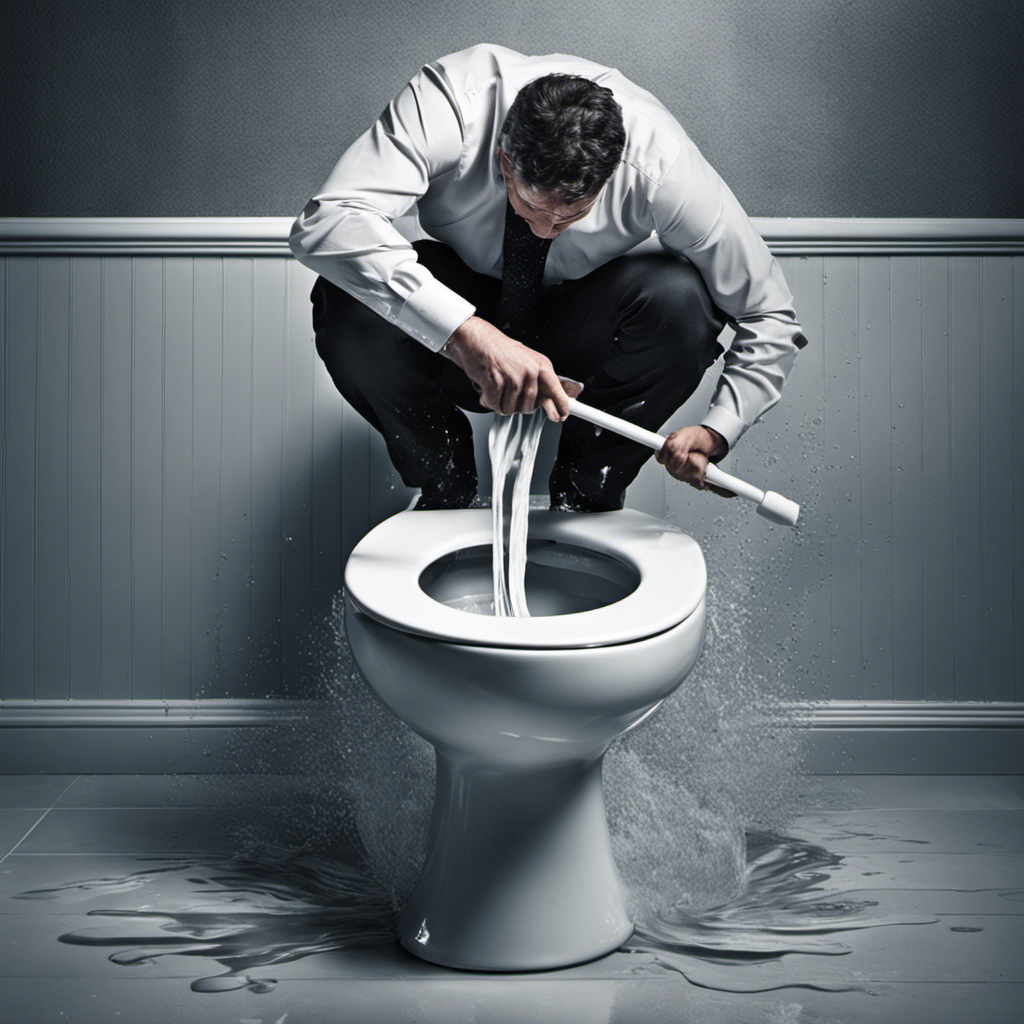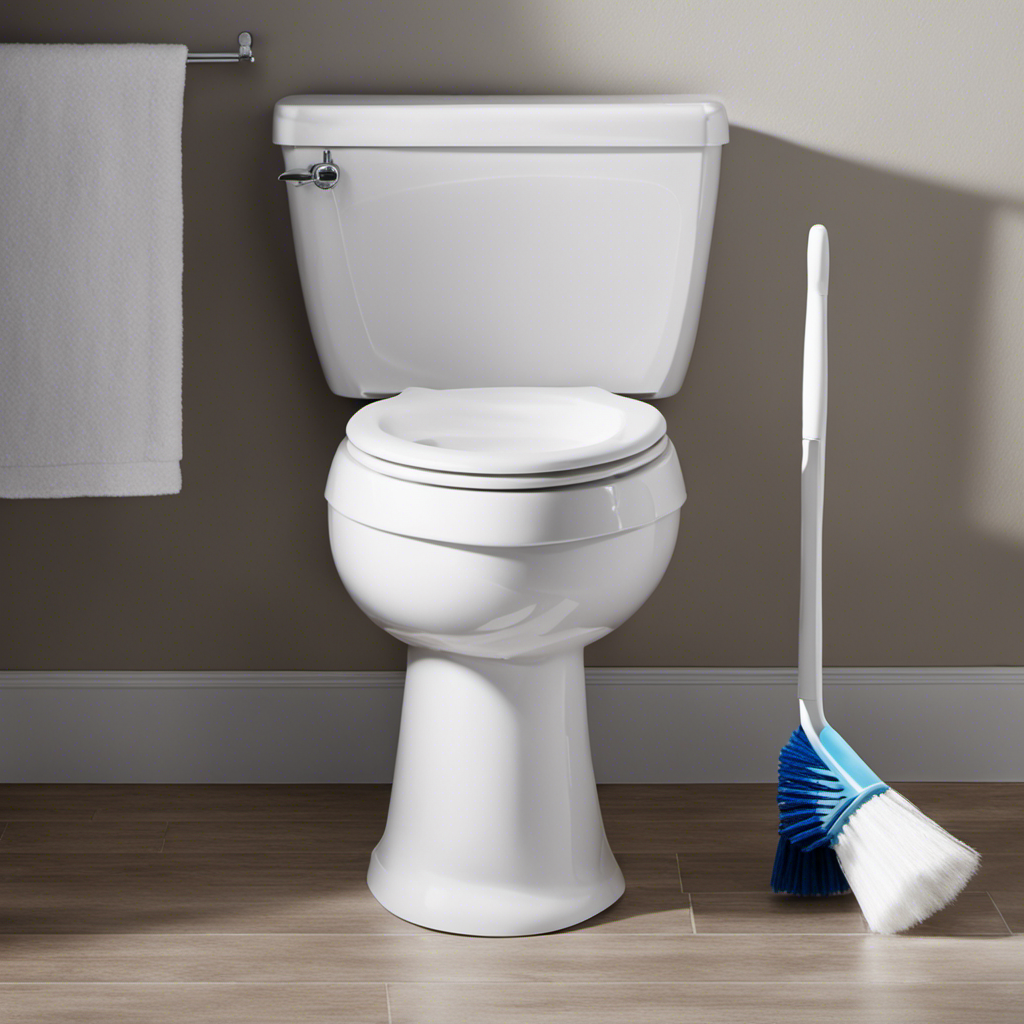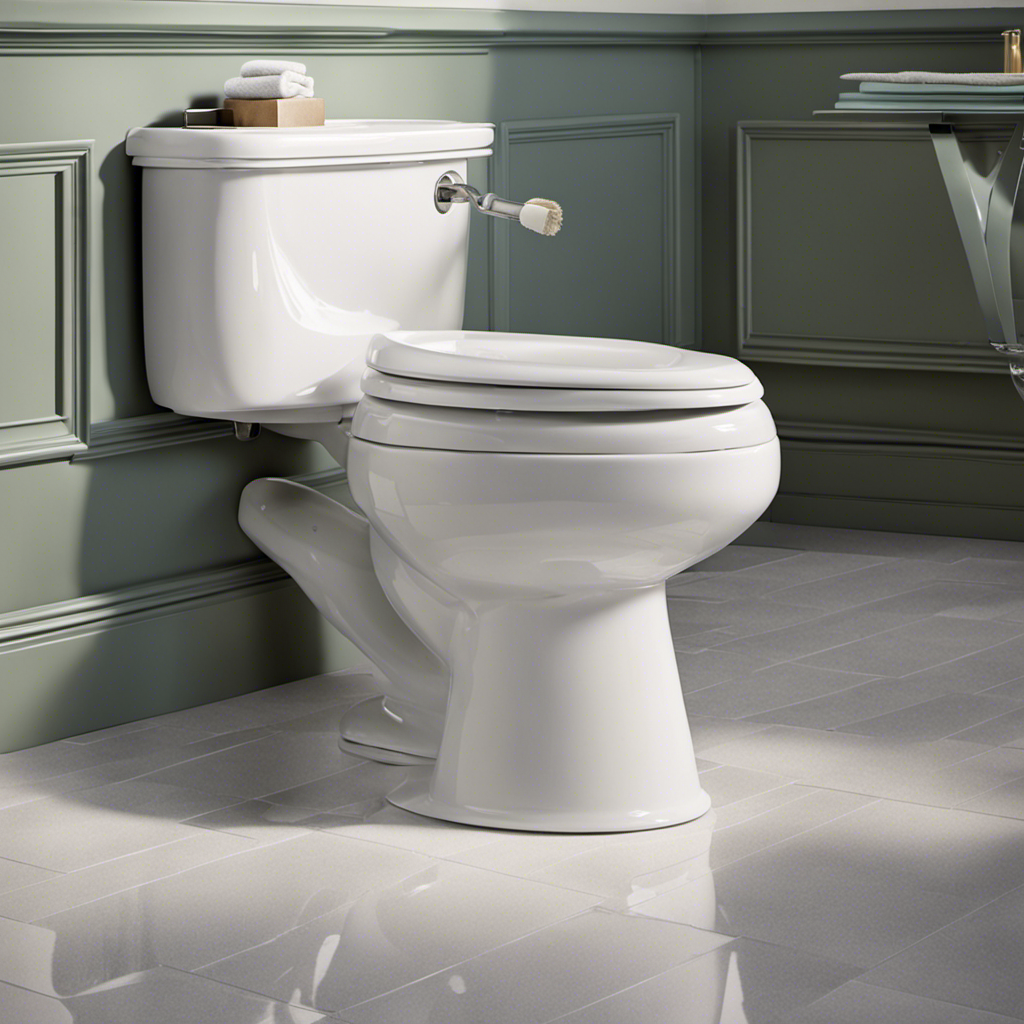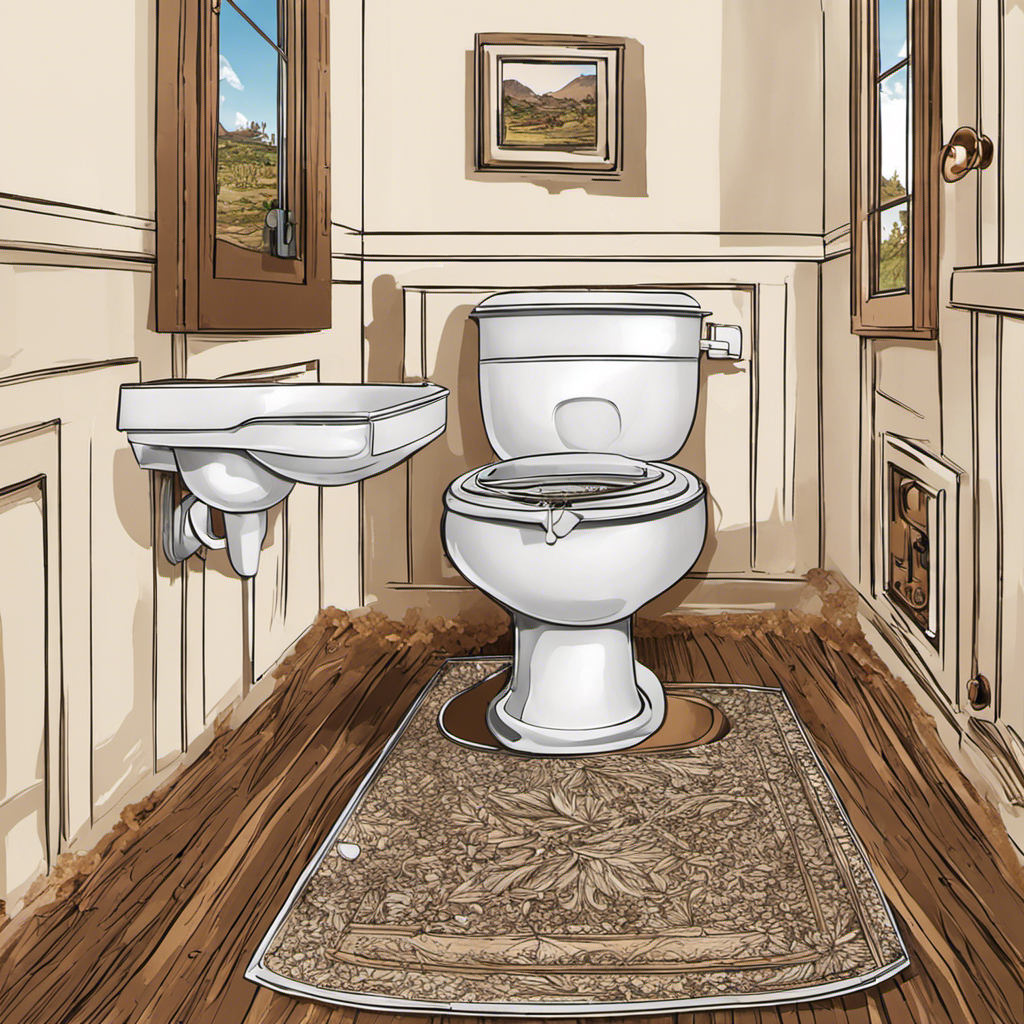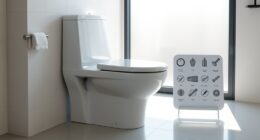I’ve been there – standing in front of a clogged toilet, feeling frustrated and unsure of what to do next. But fear not! In this article, I’ll guide you step-by-step on how to fix a clogged toilet.
We’ll start by identifying the problem and gathering the necessary tools and materials. Then, we’ll explore basic unclogging methods and move on to using a plunger for tougher clogs. If all else fails, don’t worry, we’ll discuss when it’s time to seek professional help.
So let’s get started and unclog that toilet!
Key Takeaways
- The essential tools for fixing a clogged toilet include a plunger, toilet auger, wire coat hanger, bucket, old towels, and hot water.
- Basic unclogging methods involve using a plunger and pouring hot water into the toilet bowl.
- Regular maintenance of the plunger is important for its effectiveness, including cleaning it after each use and checking for any damage.
- If the clog persists, it may be necessary to seek professional help from a plumber who has the expertise and specialized tools to fix stubborn clogs.
Identifying the Problem
First, check if the toilet is completely clogged by flushing it and observing if the water drains slowly or not at all. If the water level rises to the brim and doesn’t go down, you have a severe clog.
Common causes of toilet clogs include excessive toilet paper, foreign objects, and a buildup of waste material.
Besides the slow or no drainage, other signs of a severe clog include gurgling sounds from the toilet, water backing up into the bathtub or sink, or unpleasant odors.
It is essential to identify the severity of the clog before attempting any DIY fixes. If you suspect a severe clog, it’s best to call a professional plumber for assistance.
Gathering the Necessary Tools and Materials
Before you start, make sure you have all the necessary tools and materials. Proper toilet maintenance is crucial in preventing clogs. Here is a list of the essential items you will need:
| Tools | Materials | Safety Equipment |
|---|---|---|
| Plunger | Bucket | Rubber gloves |
| Toilet auger | Old towels | Safety goggles |
| Wire coat hanger | Hot water |
Having these tools and materials ready will make the process of fixing a clogged toilet much easier. The plunger is the most common tool used to unclog toilets. A toilet auger can be used for more stubborn clogs. The wire coat hanger can also be helpful in breaking up and removing blockages. Remember to use safety equipment such as rubber gloves and goggles to protect yourself from any potential hazards.
With all the necessary tools and materials gathered, you can now move on to attempting basic unclogging methods.
Attempting Basic Unclogging Methods
When it comes to unclogging a toilet, one of the most effective tools is a plunger. The plunger works by creating suction and pressure to dislodge the clog.
To use a plunger effectively, you need to position it over the drain hole and push down firmly, then pull up quickly to create the suction.
If the plunger doesn’t work, another method you can try is the hot water trick.
Plunger Effectiveness for Clogs
Using a plunger is usually the most effective way to unclog a toilet. However, to ensure its effectiveness, proper plunger maintenance is crucial. Here are some steps to keep your plunger in good condition:
| Maintenance Tips | Frequency |
|---|---|
| Clean the plunger after each use | Every time |
| Check the rubber suction cup for cracks or damage | Monthly |
| Store the plunger in a dry area away from direct sunlight | Always |
In addition to regular maintenance, you can enhance the plunger’s effectiveness by using baking soda. Simply pour half a cup of baking soda into the toilet bowl, followed by a cup of vinegar. Let the mixture sit for a few minutes, then plunge vigorously. The combination of baking soda and vinegar creates a reaction that helps break down the clog. Remember to always flush the toilet afterwards to ensure complete removal of the clog.
Using Hot Water Trick
To enhance the effectiveness of your plunger, try pouring hot water into the toilet bowl before plunging. This simple trick can make a world of difference in unclogging your toilet quickly and efficiently.
However, it’s important to take some precautions when using hot water. First, make sure the water is not boiling, as this can cause damage to the toilet bowl. Instead, use hot tap water that is comfortable to touch.
Carefully pour the hot water into the bowl, aiming for the center of the clog. The hot water will help to soften and break down the debris, making it easier for the plunger to create the necessary pressure to clear the blockage.
Using a Plunger for Tougher Clogs
When it comes to tackling tougher clogs, using the plunger technique can be highly effective.
In order to successfully unclog a toilet using a plunger, it’s important to follow a few key tips.
Additionally, if the plunger technique doesn’t work, there are alternative solutions that can be explored to address the stubborn clog.
Plunger Technique Tips
One way you can effectively unclog a toilet is by using the correct plunging technique. Here are some tips for proper plunger technique that can help you tackle even the toughest clogs.
First, make sure your plunger has a good seal around the drain. Position the plunger over the hole and press down firmly to create a vacuum.
Next, push and pull the plunger vigorously, using quick and forceful motions. This will help dislodge the clog and create pressure to force it down the drain.
Avoid making common mistakes such as using too much force, as this can damage the toilet or cause the water to splash out. Also, be patient and persistent, as it may take several attempts to fully clear the clog.
Once you’ve mastered the plunging technique, you can move on to alternative clog solutions.
Alternative Clog Solutions
Try using a mixture of baking soda and vinegar as an alternative solution to clear stubborn clogs. This natural remedy is a safer and more environmentally friendly option compared to chemical cleaners. Here is a step-by-step guide on how to use this mixture effectively:
-
Gather the necessary materials: baking soda, vinegar, a measuring cup, and a kettle or pot of boiling water.
-
Start by pouring half a cup of baking soda into the clogged drain.
-
Follow this by pouring half a cup of vinegar into the drain.
-
Quickly cover the drain with a plug or cloth to trap the reaction and force the mixture down.
-
Let the mixture sit for about 30 minutes to allow it to break down the clog.
-
After the time has passed, carefully remove the cover and pour a kettle or pot of boiling water down the drain.
-
Repeat the process if necessary.
Using natural remedies like baking soda and vinegar not only clears clogs effectively but also helps to reduce exposure to harsh chemicals that can be harmful to you and the environment.
Trying a Toilet Auger for Stubborn Blockages
Using a toilet auger can be an effective solution for stubborn blockages. When faced with a clogged toilet, it’s important to explore alternative clog solutions before seeking professional help. A toilet auger, also known as a toilet snake, is a tool specifically designed to clear clogs in the toilet.
Here are the steps to use a toilet auger effectively:
- Start by inserting the auger’s flexible cable into the toilet bowl, ensuring it goes past the trap.
- Rotate the handle clockwise to push the cable further into the drain.
- Once you feel resistance, continue rotating while applying gentle pressure to break up the blockage.
- Slowly retract the cable, allowing any debris to be pulled out of the drain.
- Flush the toilet to ensure the blockage is completely cleared.
By following these steps and using a toilet auger, you can often resolve stubborn toilet clogs without the need for professional assistance.
However, if all else fails, it may be necessary to seek the help of a professional plumber.
Seeking Professional Help if All Else Fails
After trying a toilet auger and still facing a stubborn clog, it may be time to seek professional plumbing services. While DIY toilet repair tips can be helpful for minor issues, more serious blockages may require the expertise of a professional plumber.
Here are a few reasons why:
- Expertise: Professional plumbers have the knowledge and experience to diagnose and fix complex toilet issues.
- Specialized Equipment: They have access to specialized tools and equipment that can effectively remove even the toughest clogs.
- Time and Convenience: Hiring a professional plumber saves you time and effort, as they can quickly resolve the problem without you having to spend hours trying different techniques.
Frequently Asked Questions
Can I Use a Regular Plunger to Unclog a Toilet?
Yes, you can use a regular plunger to unclog a toilet. However, if the clog is stubborn, alternative plunging techniques may be necessary. Another option is using a toilet auger, which has the benefit of reaching deeper into the drain to clear the blockage.
What Are Some Alternative Methods to Unclog a Toilet if I Don’t Have a Toilet Auger?
If I don’t have a toilet auger, I can use alternatives like toilet paper alternatives or natural DIY remedies to unclog a toilet. These methods can help me fix the clogged toilet without professional tools.
How Long Should I Wait Before Attempting Another Unclogging Method if the First One Doesn’t Work?
If the first unclogging method doesn’t work, it’s important to wait for a few minutes before attempting another solution. This waiting time allows for any residual water pressure to subside and ensures that the alternative solutions are effective.
Is It Safe to Use Chemical Drain Cleaners to Unclog a Toilet?
It’s not safe to use chemical drain cleaners to unclog a toilet due to toxicity concerns. Instead, try natural drain cleaners, which can be effective without the harmful chemicals.
What Are Some Signs That Indicate a More Serious Plumbing Issue That Requires Professional Help?
Common signs of a more serious plumbing issue include water leaks, slow draining, and foul odors. If you notice these problems persisting despite your efforts to unclog the toilet, it’s time to call a professional for help. To prevent future clogs, avoid flushing non-flushable items.
Conclusion
So there you have it, folks! Fixing a clogged toilet may seem like a daunting task, but with the right tools and a little bit of patience, you’ll be able to tackle even the toughest blockages.
Remember to start with basic unclogging methods, like using hot water or a mixture of baking soda and vinegar. If that doesn’t work, don’t be afraid to bring out the big guns – a plunger or a toilet auger.
And if all else fails, don’t hesitate to call in the professionals. They’ll have your toilet back up and running in no time. Trust me, this process may seem like rocket science, but it’s actually as easy as pie!
